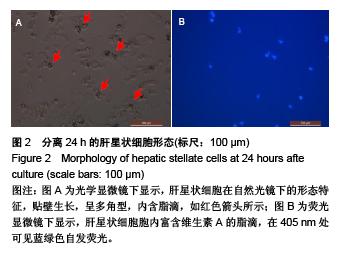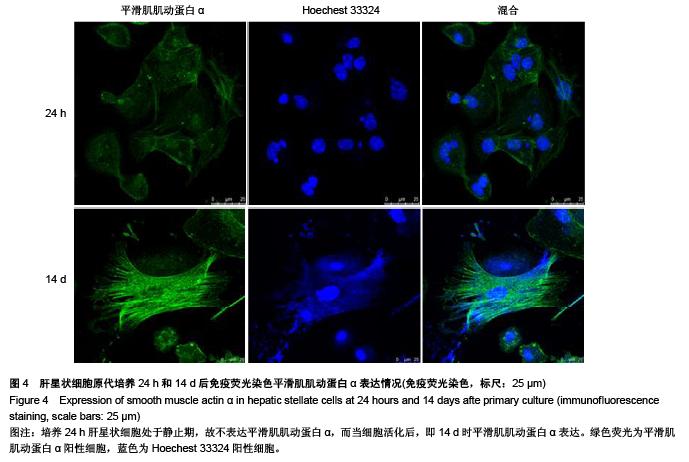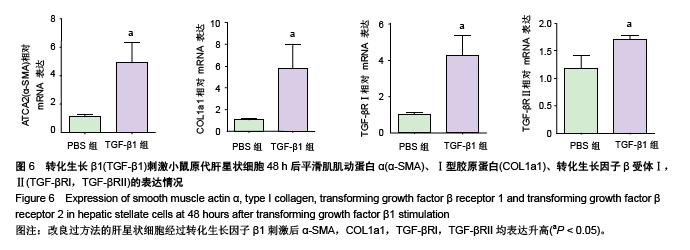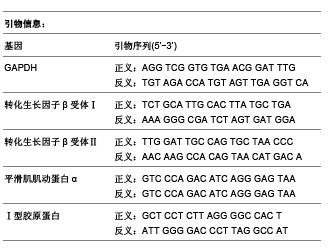| [1] Mehal WZ, Iredale J, Friedman SL. Scraping fibrosis: expressway to the core of fibrosis. Nat Med. 2011;17(5): 552-553.[2] Hellerbrand C. Hepatic stellate cells-the pericytes in the liver. Pflugers Arch. 2013;465(6):775-778.[3] Blouin A, Bolender RP, Weibel ER. Distribution of organelles and membranes between hepatocytes and nonhepatocytes in the rat liver parenchyma: a stereological study. J Cell Biol. 1977;72(2):441-455.[4] Puche JE, Saiman Y, Friedman SL, Hepatic stellate cells and liver fibrosis. Compr Physiol. 2013;3(4):1473-1492.[5] Pellicoro A, Ramachandran P, Iredale JP, et al. Liver fibrosis and repair: immune regulation of wound healing in a solid organ. Nat Rev Immunol. 2014;14(3):181-194.[6] Knook D, Seffelaar A, De Leeuw A. Fat-storing cells of the rat liver: their isolation and purification. Exp Cell Res. 1982; 139(2): 468-471.[7] Galambos JT, Hollingsworth MA, Falek A, et al. The rate of synthesis of glycosaminoglycans and collagen by fibroblasts cultured from adult human liver biopsies. J Clin Invest. 1977; 60(1):107-114.[8] Radaeva S, Sun R, Jaruga B, et al., Natural killer cells ameliorate liver fibrosis by killing activated stellate cells in NKG2D-dependent and tumor necrosis factor-related apoptosis-inducing ligand-dependent manners. Gastroenterology. 2006;130(2):435-452.[9] He X, Bao J. Chen J, et al. Adenovirus-mediated over-expression of Septin4 ameliorates hepatic fibrosis in mouse livers infected with Schistosoma japonicum. Parasitol Int. 2015.[10] Friedman SL, Roll FJ. Isolation and culture of hepatic lipocytes, Kupffer cells, and sinusoidal endothelial cells by density gradient centrifugation with Stractan. Anal Biochem. 1987;161(1):207-218.[11] Mederacke I, Dapito D, Affo H, et al. High-yield and high-purity isolation of hepatic stellate cells from normal and fibrotic mouse livers. Nat Protoc. 2015;10(2):305-315.[12] Bartneck M, Warzecha KT, Tag CG, et al. Isolation and time lapse microscopy of highly pure hepatic stellate cells. Anal Cell Pathol (Amst). 2015;2015:417023.[13] Chang W, Yang M, Song L, et al. Isolation and culture of hepatic stellate cells from mouse liver. Acta Biochim Biophys Sin (Shanghai). 2014;46(4):291-298.[14] Lee SM, Schelcher C, Demmel M, et al. Isolation of human hepatocytes by a two-step collagenase perfusion procedure. J Vis Exp. 2013.[15] Hendriks HF, Verhoofstad WA, Brouwer A, et al. Perisinusoidal fat-storing cells are the main vitamin A storage sites in rat liver. Exp Cell Res. 1985;160(1):138-149.[16] Troeger JS, Mederacke I, Gwak GY, et al. Deactivation of hepatic stellate cells during liver fibrosis resolution in mice. Gastroenterology. 2012;143(4):1073-1083.[17] Roderburg C, Luedde M, Vargas Cardenas D, et al. miR-133a mediates TGF-beta-dependent derepression of collagen synthesis in hepatic stellate cells during liver fibrosis. J Hepatol. 2013;58(4):736-742.[18] D'Ambrosio DN, Walewski JL, Clugston RD, et al. Distinct populations of hepatic stellate cells in the mouse liver have different capacities for retinoid and lipid storage. PLoS One. 2011;6(9):e24993.[19] Lee SM, Schelcher C, Demmel M, et al. Isolation of human hepatocytes by a two-step collagenase perfusion procedure. J Vis Exp, 2013;(79):50615.[20] Yokoi Y, Namihisa T, Kuroda H, et al. Immunocytochemical detection of desmin in fat-storing cells (Ito cells). Hepatology, 1984;4(4):709-714.[21] Ballardini G, Groff P, Badiali L, et al. Ito cell heterogeneity: desmin-negative Ito cells in normal rat liver. Hepatology, 1994;19(2):440-446.[22] Skalli O, Schurch W, Seemayer T, et al. Myofibroblasts from diverse pathologic settings are heterogeneous in their content of actin isoforms and intermediate filament proteins. Lab Invest. 1989;60(2):275-285. [23] Li YH, Woo SH, Choi DH, et al. Succinate causes alpha-SMA production through GPR91 activation in hepatic stellate cells. Biochem Biophys Res Commun. 2015;463(4):853-858.[24] Takeji M, Moriyama T, Oseto S, et al. Smooth muscle alpha-actin deficiency in myofibroblasts leads to enhanced renal tissue fibrosis. J Biol Chem. 2006;281(52): 40193- 40200.[25] Hu GX, Wan ZY, Shao JL, et al. Effects of hydroxycamptothecin on TGFβ1, a-SMA and collagen I expression in rat hepatic satellite cells. Zhonghua Gan Zang Bing Za Zhi. 2012;20(6):453-457.[26] Miao CG, Yang YY, He X, et al. Wnt signaling in liver fibrosis: progress, challenges and potential directions. Biochimie. 2013; 95(12):2326-2335.[27] Liu X, Hu H, Yin JQ. Therapeutic strategies against TGF-beta signaling pathway in hepatic fibrosis. Liver Int. 2006;26(1): 8-22.[28] Li HY, Ju D, Zhang DW, et al. Activation of TGF-beta1-CD147 positive feedback loop in hepatic stellate cells promotes liver fibrosis. Sci Rep. 2015;5:16552.[29] Ni MM, Xu T, Wang YR, et al. Inhibition of IRF3 expression reduces TGF-beta1-induced proliferation of hepatic stellate cells. J Physiol Biochem. 2015.[30] Chen N, Geng Q, Zheng J, et al. Suppression of the TGF-beta/Smad signaling pathway and inhibition of hepatic stellate cell proliferation play a role in the hepatoprotective effects of curcumin against alcohol-induced hepatic fibrosis. Int J Mol Med. 2014;34(4):1110-1116. |



.jpg)

.jpg)
.jpg)
